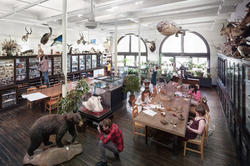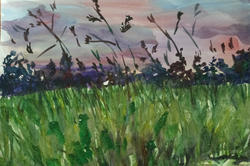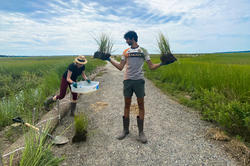Current students Jacob Sussman and Valerie Mirra discuss the impact of the lab’s founding principles on their creative practices.
STEM Scientists Use Art to Reconceptualize their Research at RISD Vis-a-thon
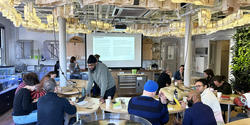
Studying a worm’s nervous system to shine light on a rare childhood disease. Investigating how global warming is killing coral reefs on the molecular level in French Polynesia. Translating data about the ocean’s floor collected by robotic autonomous underwater vehicles into a format that people can grasp. These are some of the research projects recently reconsidered at Vis-a-thon 2024 in RISD’s Edna W. Lawrence Nature Lab.
Designed and facilitated by Nature Lab Senior Research Associate Georgia Rhodes and consultant Stewart Skylar Copeland MFA 19 DM, who also teaches experimental art and technology at the University of New Mexico, the National Science Foundation-supported Vis-a-thon program promotes visualization and art as integral facets of scientific research methodology. It provides opportunities for visiting STEM researchers from across the state to work one-on-one with Vis-a-thon facilitators, critics and graduate students on experimental and innovative approaches to the problems they’re studying.
“Art is more than the contents of a museum,” Rhodes explains to the participants on kickoff day in early March. “It is a deeply personal method of observing, questioning and understanding the world around us.”
“We’re trying to generate open discourse and see where that leads.”
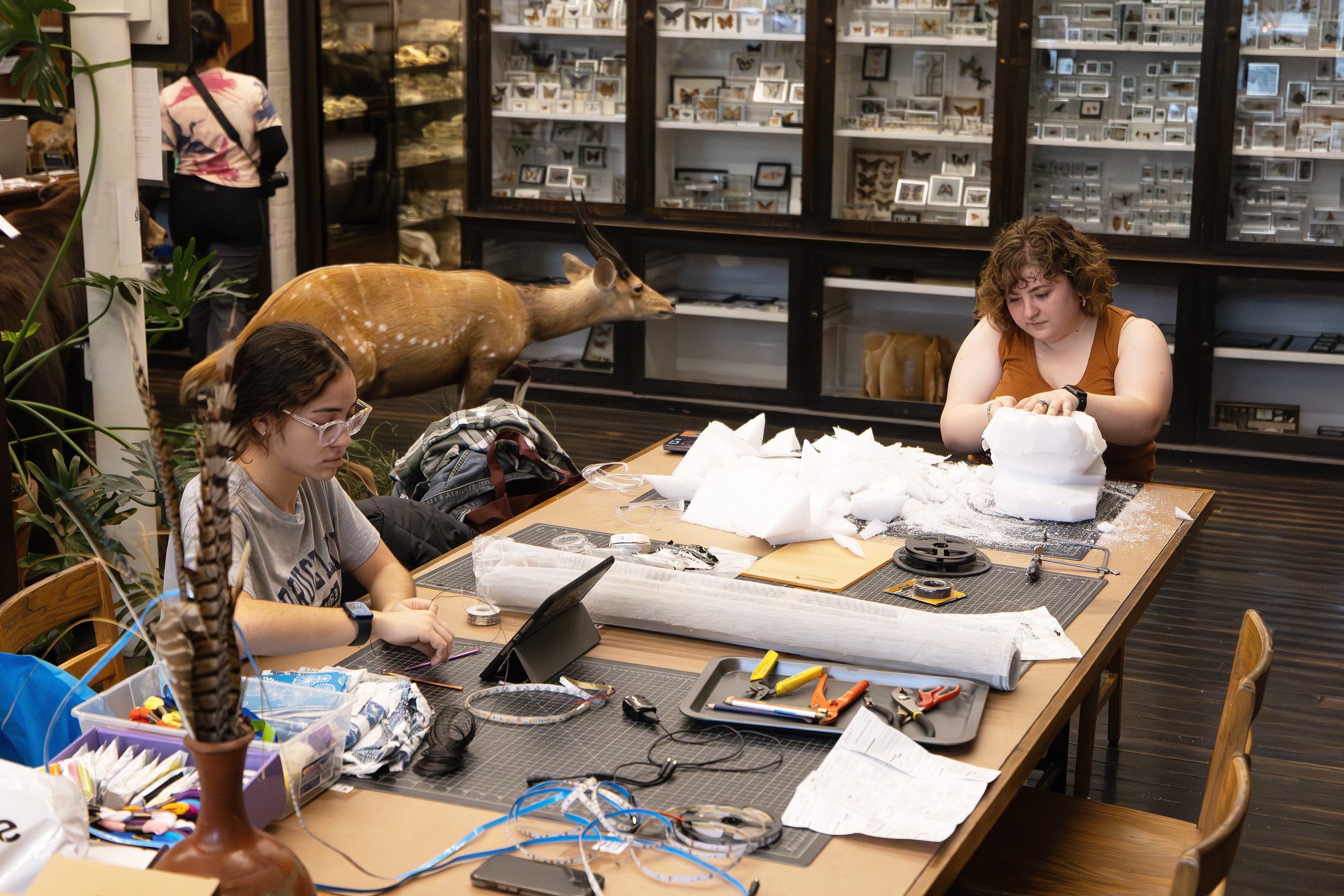
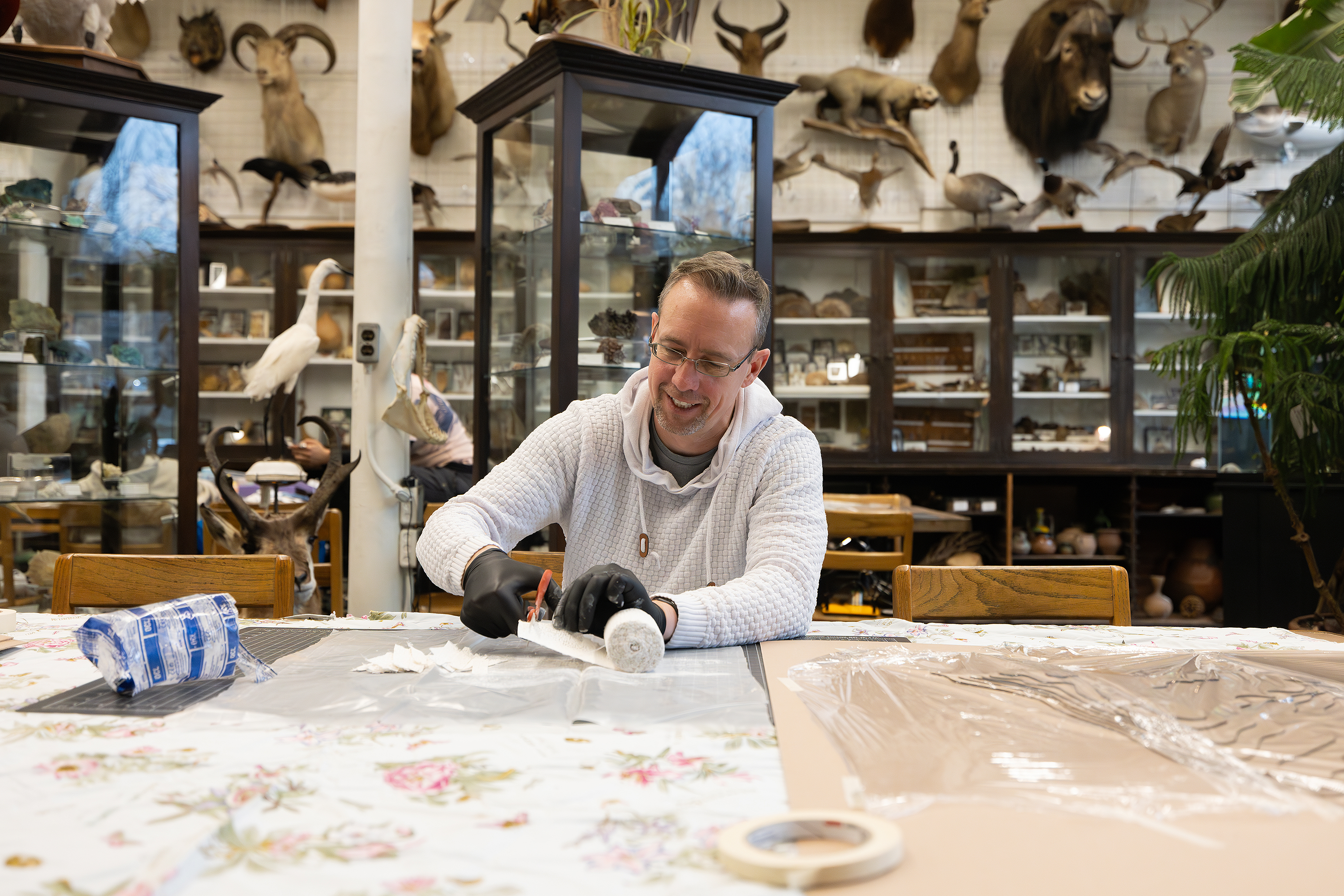
The researchers have gathered in the Nature Lab for the visualization intensive portion of the program and begin working on their proposals with help from Vis-a-thon critics Rafael Attias 91 GD, Emma Hogarth MFA 09 DM and Triton Mobley MFA 08 DM. They also take part in on-campus activities at the RISD Museum and elsewhere intended to increase their visual literacy.
“The program—now in its fourth iteration—is based on the hack-a-thon model, which uses a time limit to inspire creative problem solving,” says Copeland. “When it comes to choosing the collaborators, we’re looking for as much disciplinary diversity as possible and for artists who make a habit of meticulously documenting their process.”
Unlike other programs that use design solely as a way to communicate findings, he adds, RISD’s Vis-a-thon uses art to create a space in which to ask new and unexpected questions. “We’re trying to generate open discourse and see where that leads,” Copeland explains. “And we’ve found that these interdisciplinary conversations can really change the scientists’ perspectives about the research they’re conducting.”
As the daylong session continues, the critics do a kind of speed-dating round with the scientists, listening to their initial project ideas and offering spontaneous suggestions to creatively disrupt their lines of thinking. Hogarth recommends that Brown University Geographic Information Systems researcher Seda Salap-Ayca consider color, materiality and motion as she builds models representing the role of uncertainty in her work.
“Our goal... is to raise the value of art within the sciences as an important means of questioning the universe.”
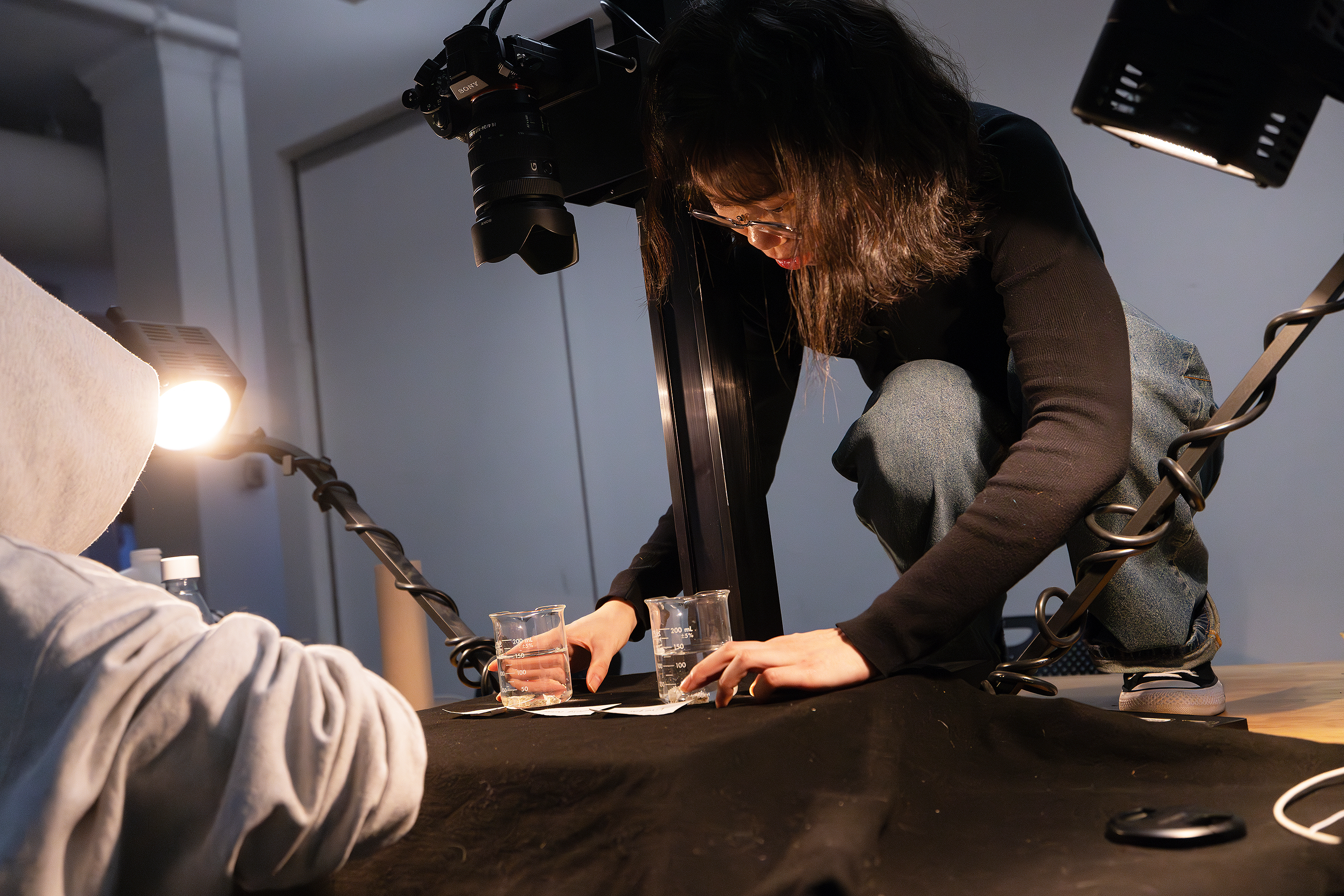
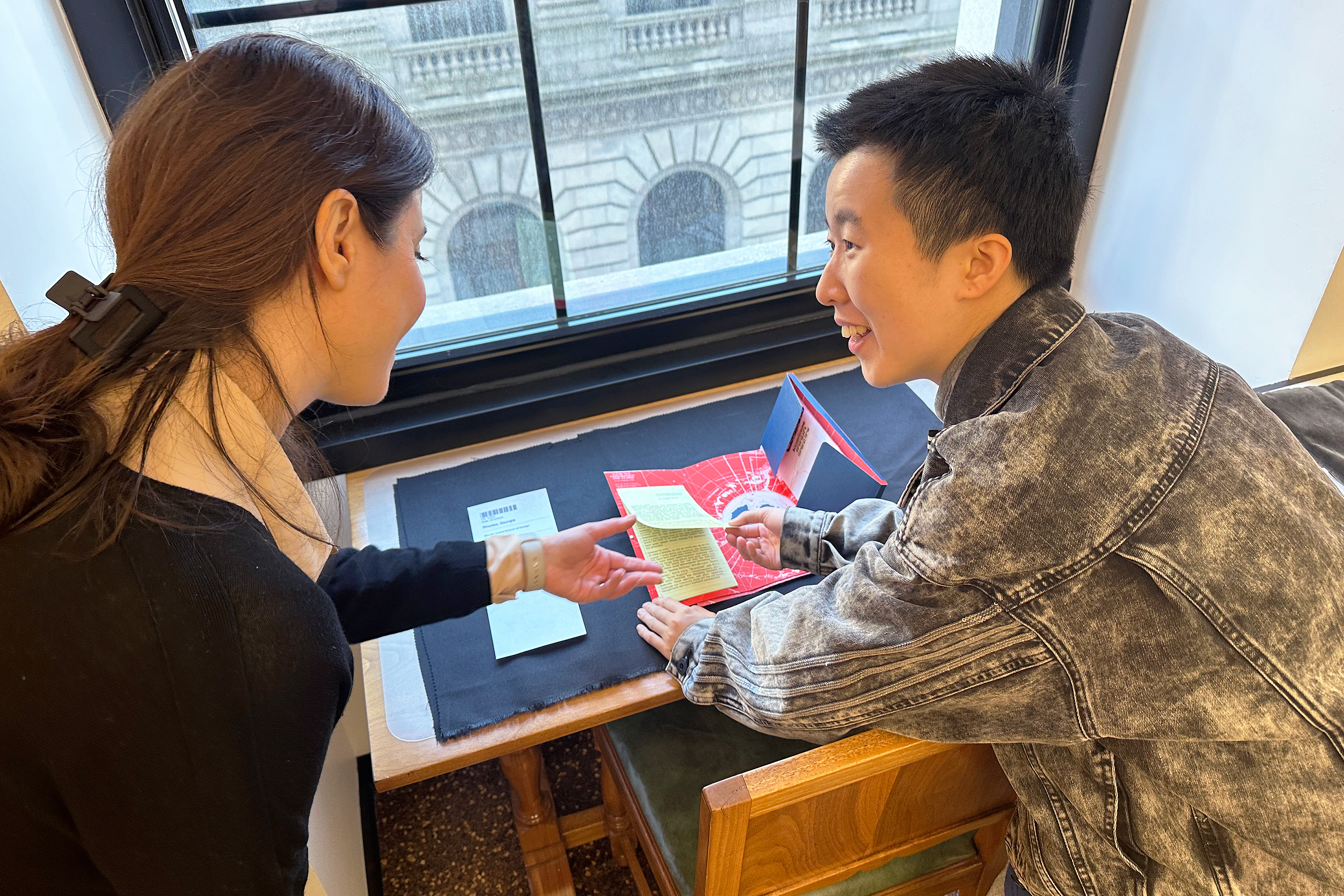
Mobley brainstorms ideas for creating an interactive exhibit with Universityh of Rhode Island grad students Tony Jacob and Farhang Naderi, who are working in the Smart Oceans Systems Lab. “The experience could be curated for each user and based on their movements and proximity to the sensor,” he offers. “That’s one way of playing with visitor expectations.”
When the day wraps, the researchers have a few weeks to digest what they learned before returning to RISD at the end of March for Vis-a-thon weekend. Working with their grad student collaborators as well as workshop technicians across campus, they then use their materials stipends to fully realize their project proposals and present them to the larger group in a critique format.
Brown PhD student Nigel Anderson studies frog species that have evolved in loud environments to use a “foot-flagging” gesture as an aggressive visual display. He collaborates with grad student Jaimie An MFA 25 SC on a succession of small sculptures inspired by the movement. “They conducted a series of related experiments over the weekend,” Rhodes exclaims, “and are now moving forward with a whole bucket of ideas!”
Niall Howlett, who studies a childhood disease called Fanconi anemia, works with Illustration grad student Mara Menahan MFA 24 IL on a poem about his research and the storyboard for an accompanying animation that brings the work to life. “Their collaboration is an incredible example of what can happen when we focus on process instead of outcomes,” says Rhodes. “Walking away with a polished product isn’t the primary goal of this program. Our goal in leading the Vis-a-thon is to raise the value of art within the sciences as an important means of questioning the universe.”
Simone Solondz / photos by Georgia Rhodes
April 11, 2024
